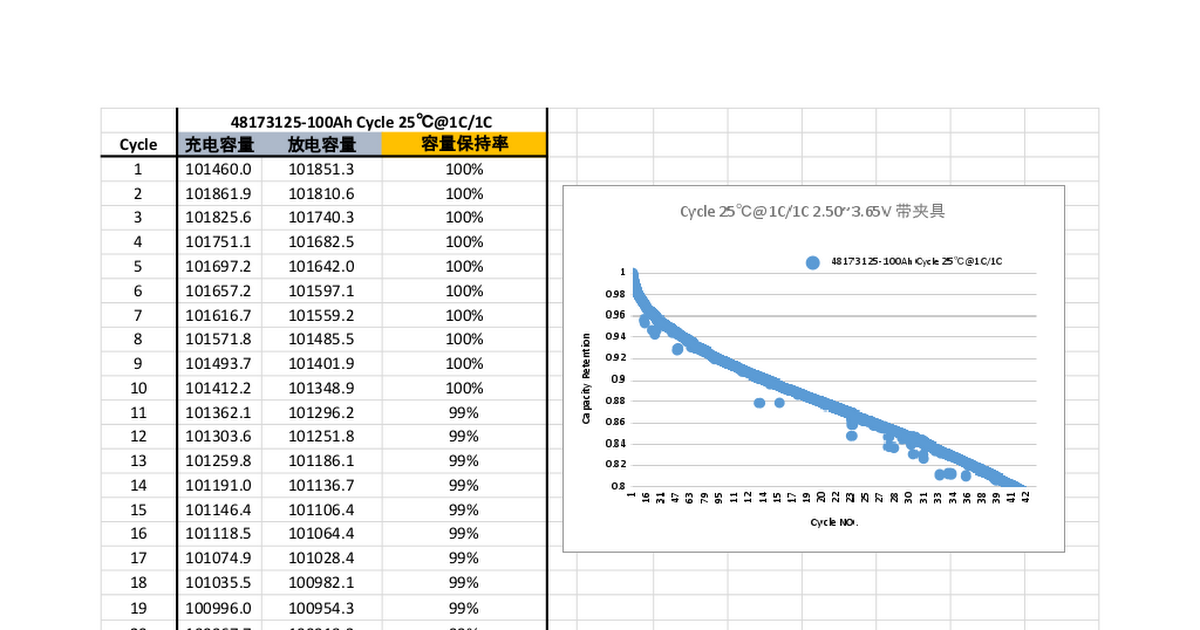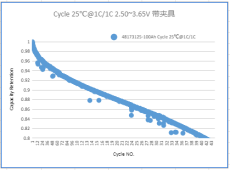SignatureSolarJames
Try Solar, the Grid will always take you back
reached out and got the actual test sheet by Ganfeng
may answer some questions, every cycle is detailed

 docs.google.com
docs.google.com
may answer some questions, every cycle is detailed
48173125-100Ah cycle data.xlsx
1.0循环 48173125-100Ah Cycle 25℃@1C/1C Cycle,充电容量,放电容量,容量保持率 1,101460.0,101851.3,100% 2,101861.9,101810.6,100% 3,101825.6,101740.3,100% 4,101751.1,101682.5,100% 5,101697.2,101642.0,100% 6,101657.2,101597.1,100% 7,101616.7,101559.2,100% 8,101571.8,101485.5,100% 9,101493.7,101401.9,100% 10,101412.2,...




